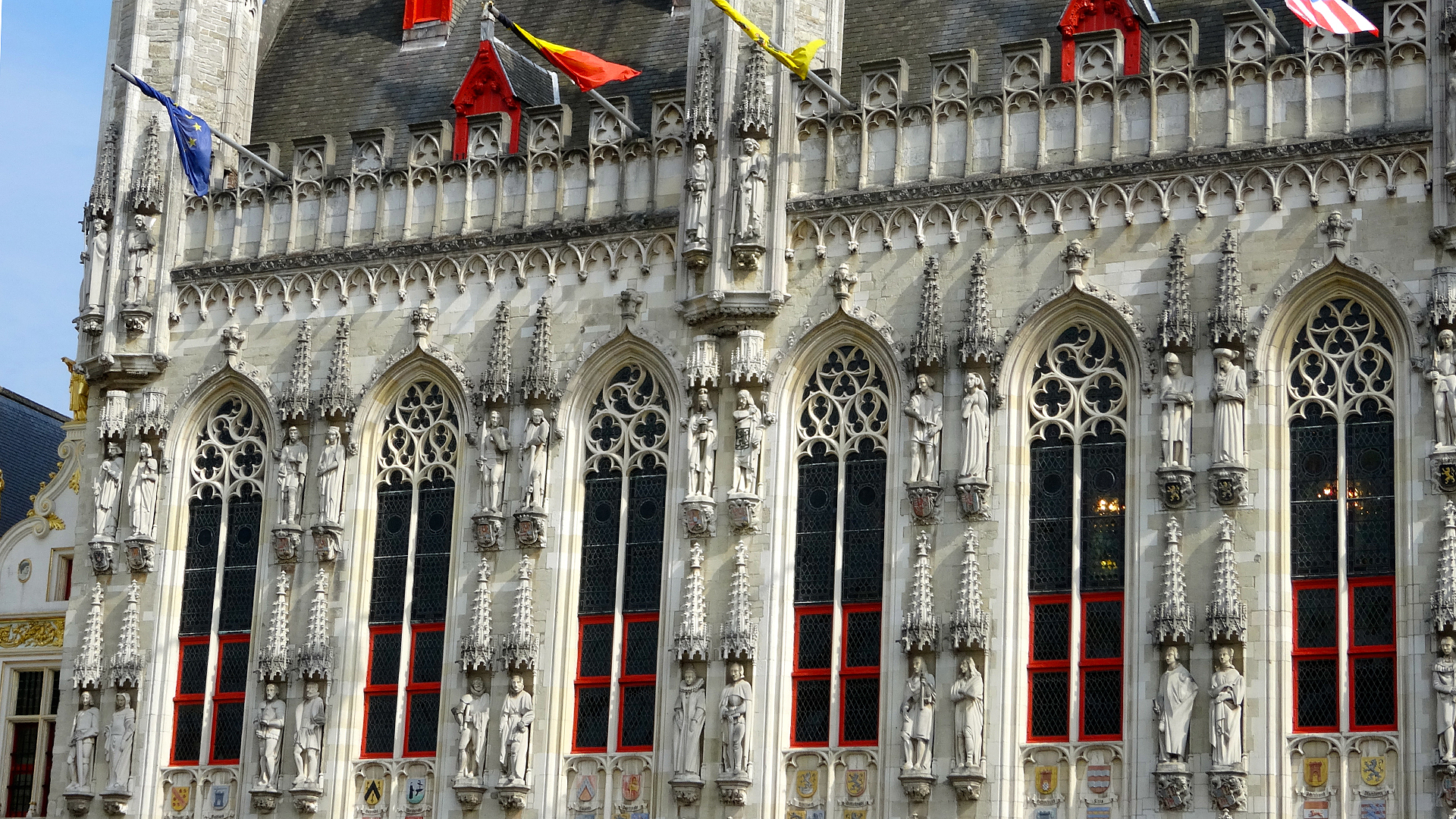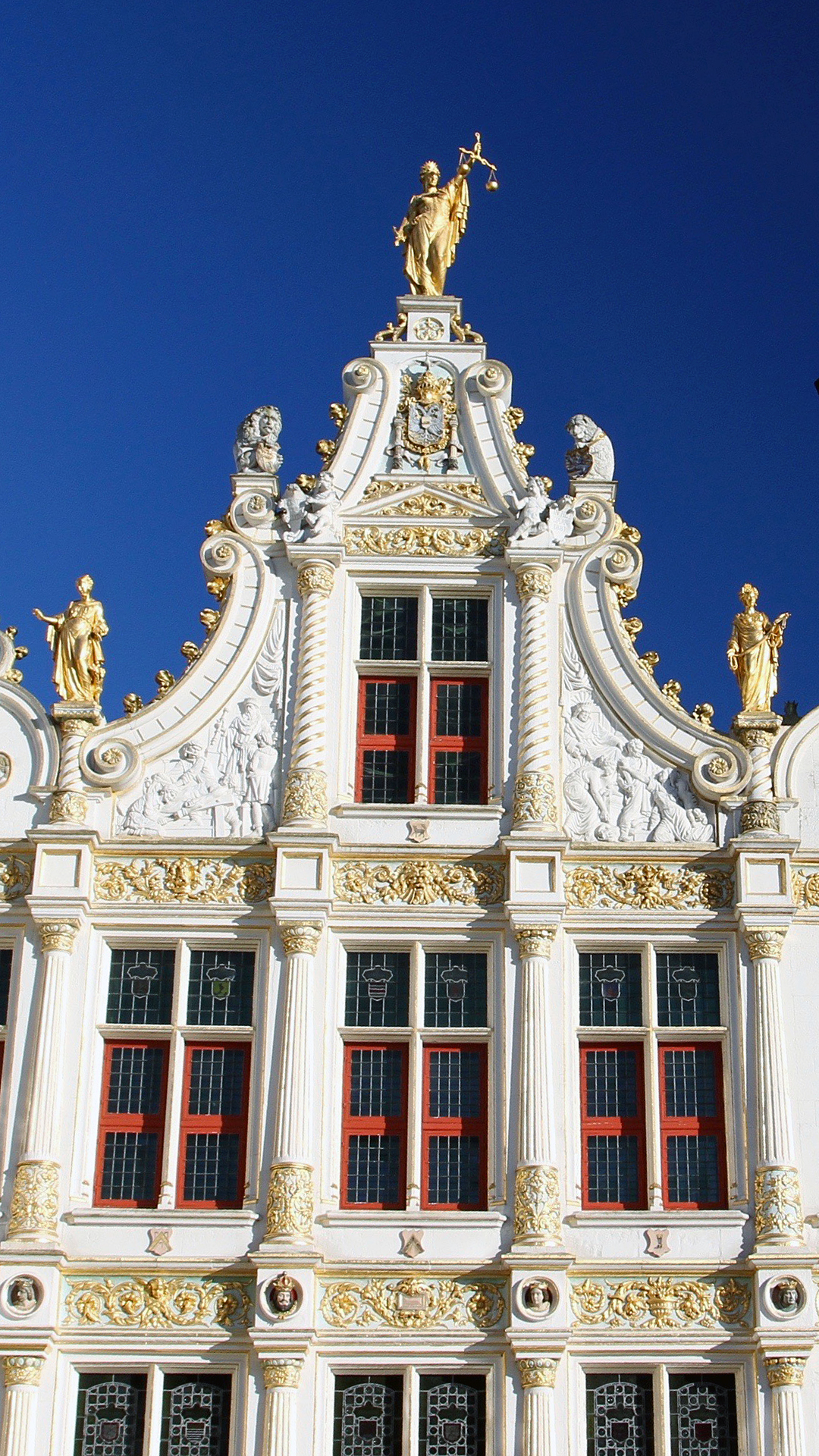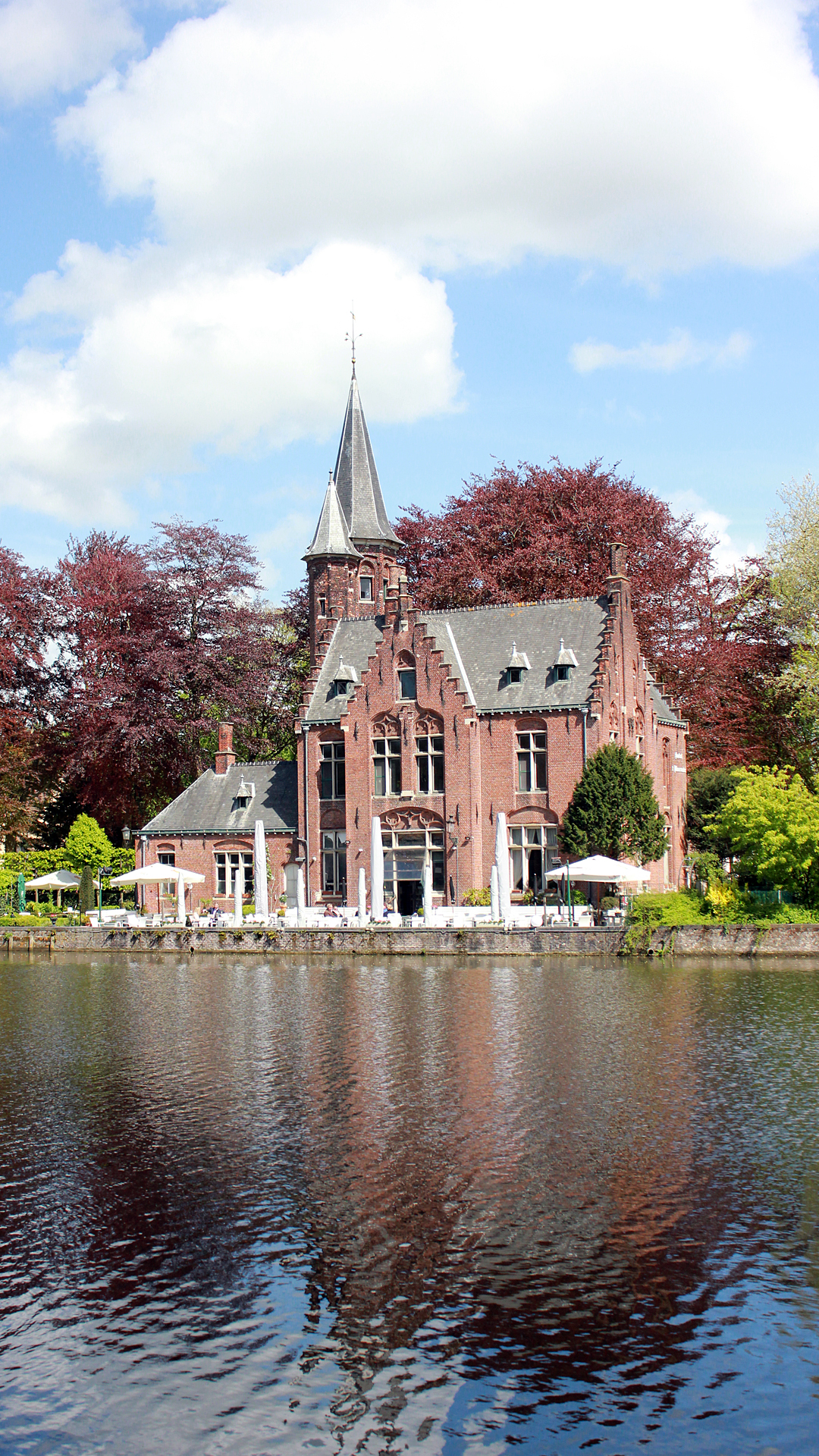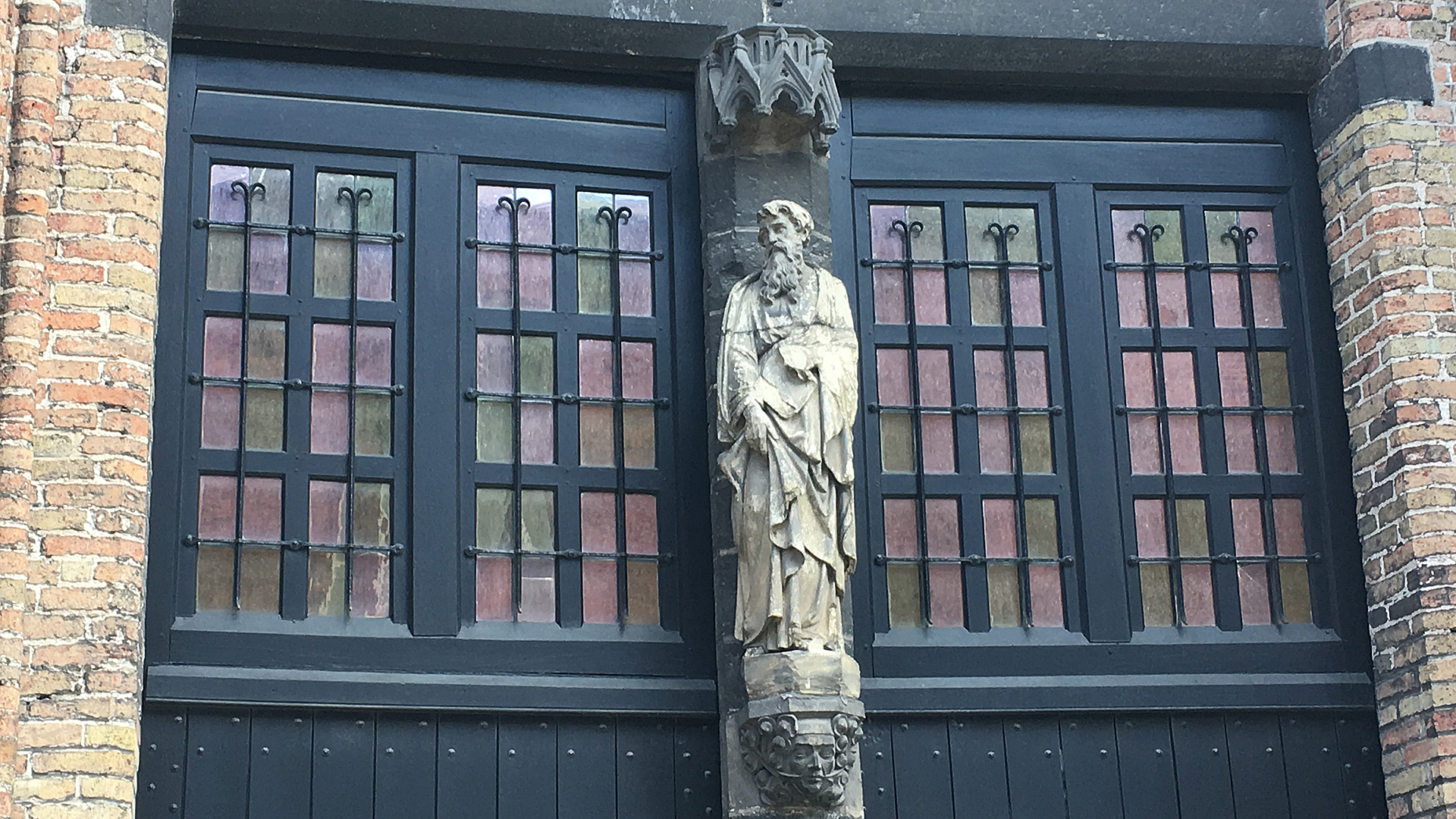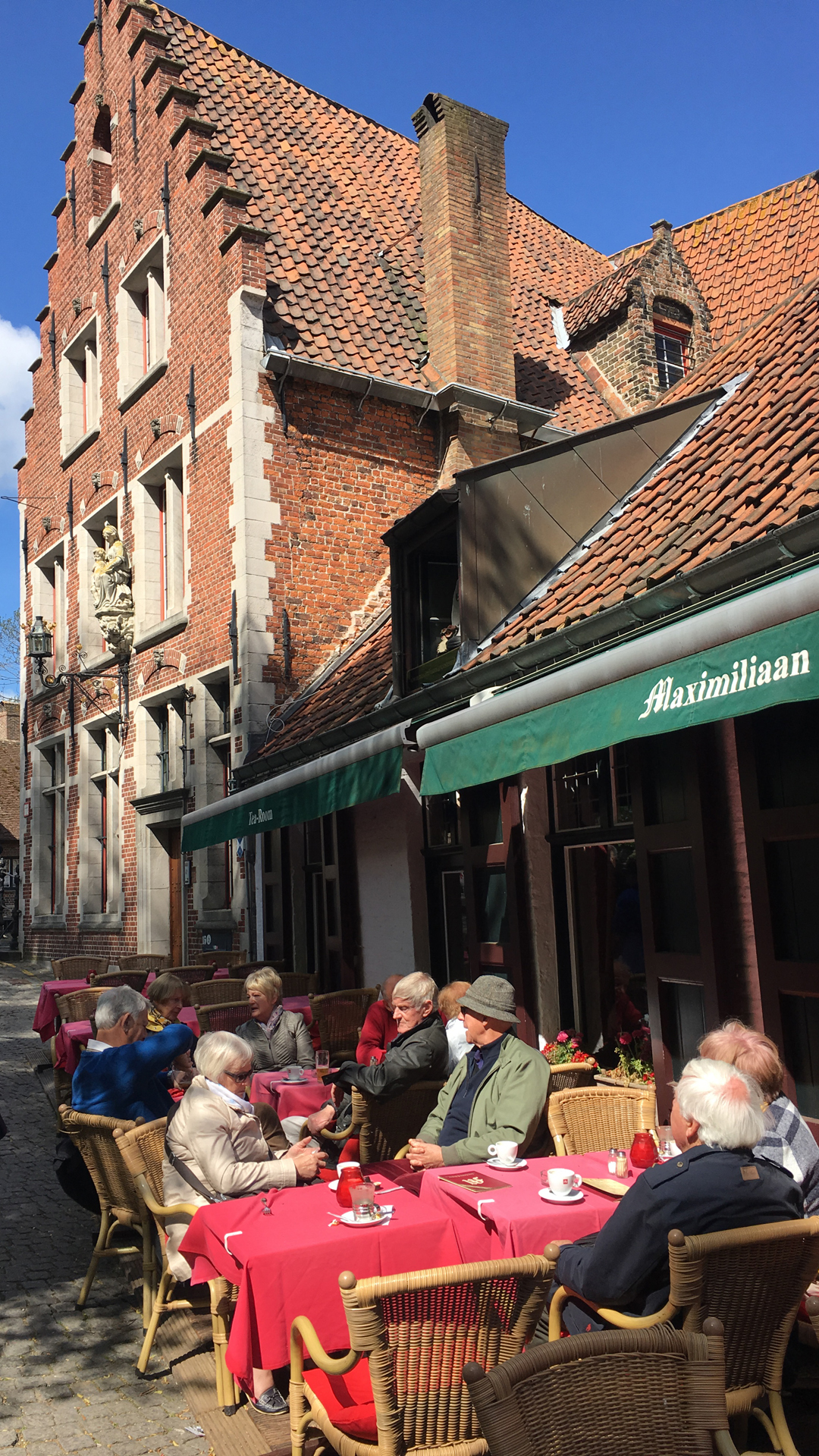







It is April 26, 2018 and we are at the port in Bruges, Belgium. In the Bruges area, the first fortifications were built after Julius Caesar's conquest of the Menapii in the first century BC, to protect the coastal area against pirates. The Franks took over the whole region from the Gallo-Romans around the 4th century and administered it as the Pagus Flandrensis. The Viking incursions of the ninth century prompted Count Baldwin I of Flanders to reinforce the Roman fortifications; trade soon resumed with England and Scandinavia. Early medieval habitation started in the 9th and 10th century on the Burgh terrain, probably with a fortified settlement and church. The city of Burges received its charter on July 27, 1128.
After 1965 the original medieval city experienced a renaissance. Restorations of residential and commercial structures, historic monuments, and churches generated a surge in tourism and economic activity in the ancient downtown area. International tourism has boomed, and new efforts resulted in Bruges being designated 'European Capital of Culture' in 2002. It attracts some 2 million tourists annually. The historic city center is a prominent World Heritage Site of UNESCO. The city's total population is 118,187, and approximately 20,000 live in the city center. The metropolitan area, including the outer commuter zone, covers an area of 238 square miles and has a total inhabitation of 255,844.
Bruges is the capital and largest city of the province of West Flanders in the Flemish Region of Belgium, in the northwest of the country. Along with a few other canal-based northern cities, such as Amsterdam, it is sometimes referred to as The Venice of the North.
















